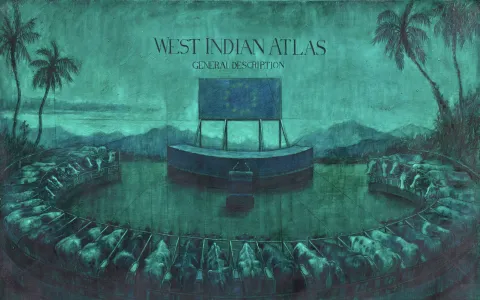Daniel De La Barra
Using drawings and the publication of fold-out maps, West Indian Atlas establishes a dialogue between two atlases that chart the same territory, despite being separated by the centuries. The atlas present two opposing forms of narrating geography: the West Indian Atlas of 1775 portrayed Latin American territories as paradises ripe for imperial plunder, while the Atlas of Environmental Justice (EJAtlas) documents present-day social and environmental conflicts. Where the former constructed an idyllic image of the territory that completely ignored the violence underpinning its exploitation, the latter inverts that operation: rather than rendering conflict invisible, it maps it.
Superimposing both imaginaries reveals the continuity between colonialism and the current environmental crisis, demonstrating that the same spaces once mapped as inexhaustible sources of wealth are now the settings for resistance against new forms of extractivism.
Biography
Daniel De la Barra (Lima, 1992) explores the potential of fiction and political imagination as regenerative forces capable of dismantling power structures repeated time and again throughout history. He has exhibited his work at the Delfina Foundation; Frieze London; La Casa Encendida; the Fondazione Sandretto; Casa Velázquez; ARCO; La Maison de l'Amérique Latine in Paris; the Royal Spanish Academy in Rome; Arts Santa Mònica; the Joan Prats Gallery; the Livia Benavides Gallery; the Central Museum of Lima; Material (CDMX); and the Patricia Ready Gallery (Chile).
He has received a number of grants and awards from institutions including La Casa Encendida; the Delfina Foundation; Matadero Madrid; the Fondation Carasso In Situ Residency; Secuencias VEGAP; the Miró Mallorca Foundation; the Royal Spanish Academy in Rome; Barcelona Crea; and the New Art Award of the Collezione Taurisano.
Daniel De La Barra is a recipient of a Three-month Residency for Environmental Projects (2025).

